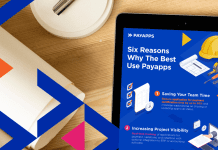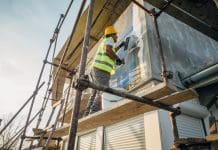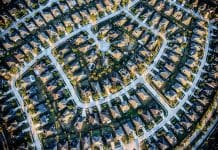Andreas Trisko and Katharina Söpper from the Municipal Department of Urban Development and Planning, City of Vienna sheds light on the Urban Development Plan Vienna 2025…
Vienna’s Urban Development Plan 2025 (UDP 2025) was adopted in June 2014 and is the 4th development plan since 1985. The key question is, how does the municipality plan aim on keeping its high quality of life, by using less resources, saving free space and being a smart city? The UDP 2025 answers this question by using “True Urban Spirit”, which displays the commitment of the city to being livable for everyone. Nowadays Vienna can look back on being the most livable city in the world, several times in a row. 1
This fact displays that Vienna already is very attractive for existing as well as new residents. After gaining more than 200.000 new residents in the last 15 years, statistical predictions expect 2 million inhabitants for 2029 (2014: 1.8 million inhabitants).
Living space was provided by the development of new areas, but as well in the existing city by reusing empty housing space. Urban development areas will provide new housing space in the upcoming decade. Current and future residents will benefit from the further development of the city, from new living and working spaces as well as from new and improved infrastructures.
The UDP 2025 illustrates principles along them the City of Vienna will develop the city during the next decade.
All initiatives and measures are strategic and lay the first step for practical projects. Further thematic goals are discussed on the next level of the strategic framework, in so called thematic concepts. These concepts deepen the content of the UDP 2025 and fill the general framework with more detailed strategies on particular topics. Already published are thematic concepts on mobility, free and green spaces as well as on high-rise buildings. Thematic concepts on open space, industrial zones and energy-spatial-planning are in preparation.
In addition to the urban development goals, Vienna`s further development is guided by another strategic guideline, also published in 2014. The Smart City Wien Framework Strategy describes targets and steps along the way to become a smart city, not only in the urban planning field 2. Resources and innovations as well as a social perspective on quality of life are the core of the strategy. The UDP 2025 follows the Smart City goals and brings them to life in the urban planning field. This is true for example by the establishment of multimodal transportation modes, energy-spatial planning or in making the densely build city greener.
Vienna: building the future – Vienna: reaching beyond its borders – Vienna: networking the city
These are the titles of the 3 chapters that display the key topics of Vienna’s urban strategy, giving attention to the existing city, new urban developments, the metropolitan network, green and open spaces and mobility. A short overview is given below, and further information can be found in the UDP 2025 publication 3.
Expected urban growth brings the need of 120,000 new housing units up to 2025. In addition to housing space, new green spaces in the dense existing city as well as in new development zones need to be constructed. Moreover, new and variegated working places have to be built. Vienna follows the rule inner city growth instead of urban sprawl. Therefore, integrated brownfields (for example abandoned railway stations) will be transformed in well connected, integrated urban quarters. Mixed use of high quality green and open space, and good public transportation connections shape new development areas, as well as the rebuilding and enhancement of existing quarters.
Offering appropriate locations and working conditions for all economic activities is very important for a metropolitan city like Vienna. Safeguarding and managing of land reserves for industrial enterprises is a big issue of the UDP 2025. Moreover, Vienna is securing space for small enterprises and businesses by providing improved conditions for the entrepreneurial use of suitable spaces, for example, ground-floor spaces or old commercial properties.
Vienna is more strongly linked to its surrounding areas than ever before. The public instruments and processes for interregional co-operation must be accelerated, intensified and refined. These efforts can build on existing practices, but the methods and strategies of regional co-operation together with the neighbouring cities and municipalities in the metropolitan region have to reach further than they used to in the past.
The city of Vienna is committed to a mobility policy that is environmentally friendly, economically viable and socially fair. The central target of Vienna’s mobility policy can be summed up in “80:20” – by 2025, Vienna’s residents will make 80% of their journeys by public transport, by bike or on foot (2012: 73%) and only 20% by car (2012: 27%). In order to achieve this, Vienna is actively promoting eco-friendly means of transport.
With a network of attractive paths that connect green spaces and recreation areas Vienna is improving the offer of open spaces in the city’s inner districts. Moreover, Vienna is developing a package of measures for more quality, the better conservation of resources and more efficiency in the design of open space.
Possibilities by cooperation – UDP 2025 as strategic framework
Besides content based targets, the UDP 2025 also provides new ways of implementation and explains how to shape the city in partnership. The city of Vienna aims to use collaborative urban development and therefore looks for strong partners to help further develop the city. Hereby the city administration will become a manager of urban development. Flexible procedures replace rigid regulations. New ways of collaboration with different stakeholders enable new chances in the development of the city. Public interest targets are stated as guidelines, while bringing them to life, the city needs support by strong non-administrative partners.
Not only will the future urban planning be collaborative, also the formulation of the UDP 2025 was carried out in a dialogue oriented way. The communication concept during the formulation phase of the urban development plan made different input possible, gained in cooperative workshops, discussions and information exchange. These different ways allowed a broad debate on the further development of the city. Input was for example provided by urban planners, local district officials, neighboring municipalities, business stakeholder, non-profit organisations, citizens and international experts.
Although, the new urban development plan is mandatory for city politics and city administration only, the city of Vienna is willing to implement new projects with dedicated partners. Urban development should be governed smart and calls for everyone who has “True Urban Spirit”.
1 www.wien.gv.at/english/politics/international/competition/mercer-study.html
2 www.smartcity.wien.gv.at/site/en
3 www.wien.gv.at/english/urbandevelopment/
Andreas Trisko
Head of MA 18
Katharina Söpper
City Planner at MA 18
Municipal Department of Urban Development and
Planning, City of Vienna
















